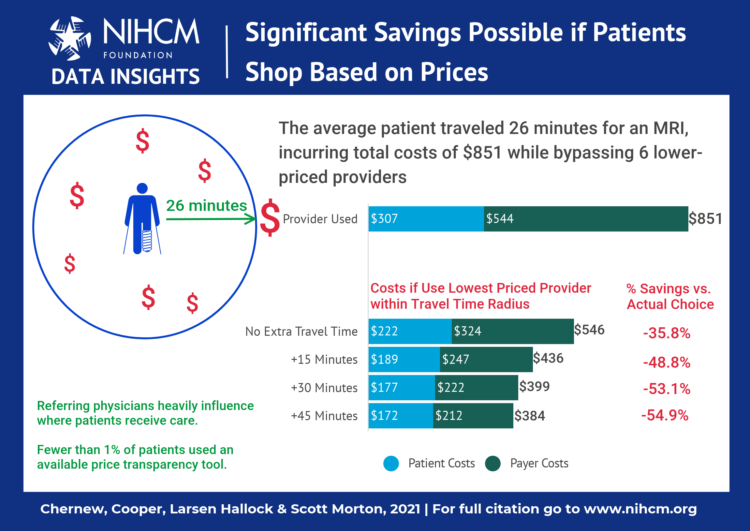Research Insights
Is Health Care Shoppable?

Why This Study Is Important
This study examines the factors that influence where patients receive elective lower-limb MRIs and the potential for patients to shop for this care. Results highlight the very important role that referring physicians play in patients’ choice of MRI provider and the lack of patient price shopping. Lower-limb MRIs should be highly shoppable because they are scheduled in advance, clinical quality does not vary meaningfully across providers and prices are widely variable. The fact that patients struggle to shop in this favorable setting makes it unlikely that greater cost sharing and price transparency will lead them to shop for more complex services. A more promising avenue may be to harness the power exerted by referring physicians and help them to help their patients select better value providers.
What This Study Found
- Patients often received their MRIs from higher-priced providers even when lower-priced options were available closer to home. On average, patients bypassed six lowerpriced providers on their way to the higher-priced location.
- If patients spent no additional time traveling but selected the lowest-priced provider available, total MRI spending would be 36 percent lower. If patients extended their travel time to one hour to reach the lowest-priced provider they could cut overall MRI spending by 55 percent.
- Despite significant price variation and high cost sharing for MRIs, out-of-pocket costs had little influence on patient decisions about where to receive care. Fewer than one percent of patients used the price transparency tool to investigate MRI prices and compute their out-of-pocket costs for different providers.
- Referring physicians are the key arbiter of where patients receive care. Physicians tend to refer their patients to a very small set of imaging providers regardless of prices charged. As a result, to access lower cost providers patients must diverge from physicians’ established referral patterns.
- Patients of physicians in hospital-owned practices were significantly more likely to be referred to a hospital-based imaging center, where MRI prices are 2.3 times higher than in free-standing centers: $1,475 vs. $645.
What These Findings Mean
This analysis highlights the influence that referring physicians have over where patients receive care. Rather than price shopping for lower-limb MRI scans, patients appear to receive care at the usual locations to which their physician traditionally refers patients. This key finding underscores how important physician advice is to patient decision-making. In lieu of increasing patient cost sharing or relying on price transparency tools, payers and policymakers should consider targeting referring physicians with information and incentives that encourage them to steer patients to more efficient, high-quality providers. The weight patients place on the advice of referring physicians also highlights the potential for hospital acquisition of physician groups to drive more patients to expensive hospital-based imaging centers.
More About This Study
This study used 2013 claims from a national private health insurer to examine prices and use of lower-limb MRIs. An online routing application was used to identify all MRI providers within specified drive times from each patient’s home. Each provider’s MRI price was computed as the average of its transaction prices, then this price was divided into the portions that would have been paid by the patient and the insurer. The price differences between the MRI provider actually used and the lowest-price MRI provider within the given drive time were what each party could have saved if the lower-priced option had been used. ANOVA and multivariate regressions identified factors influencing where patients receive care.
Chernew M, Cooper Z, Larsen Hallock E and Scott Morton F. “Physician Agency, Consumerism, and the Consumption of Lower-Limb MRI Scans.” Journal of Health Economics. (2021). https://doi.org/10.1016/j.jhea...
More Related Content
See More on: Cost & Quality

